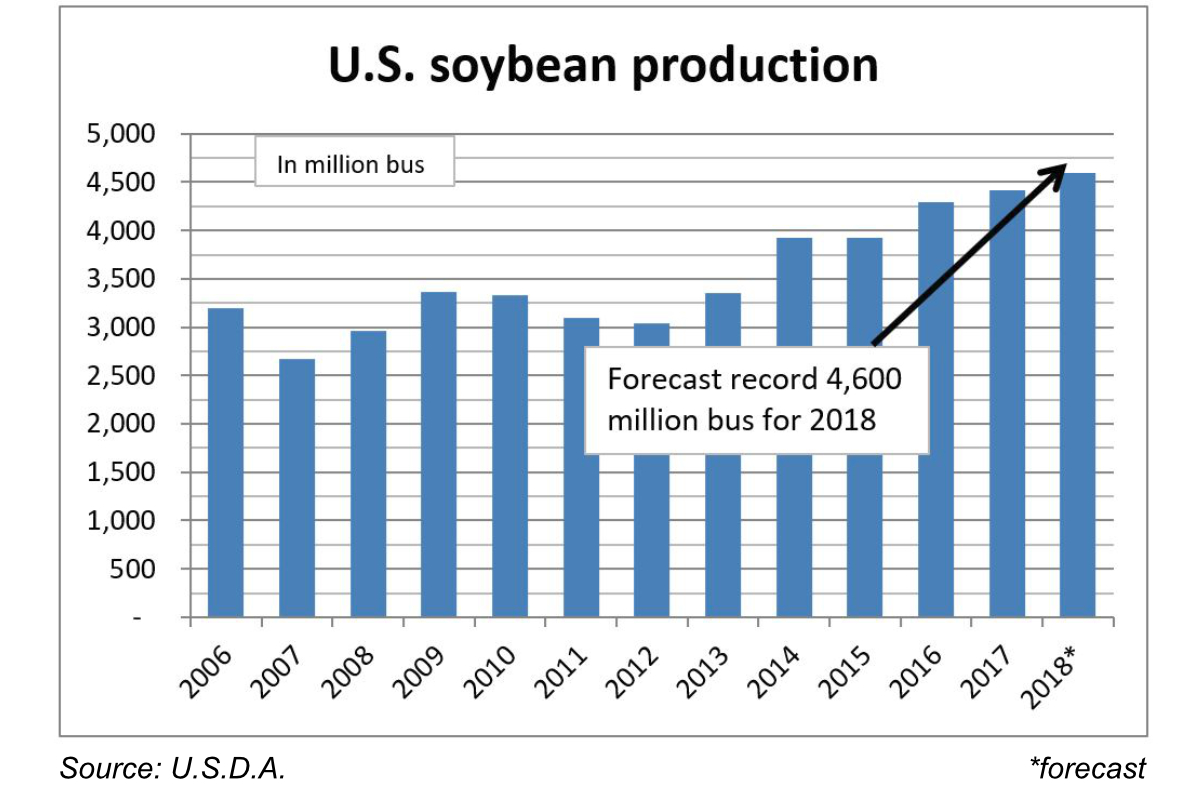WASHINGTON, D.C., U.S. — The U.S. Department of Agriculture, in its Nov. 8 Crop Production report, forecast 2018 U.S. production of corn at 14.626 billion bushels, down 1% from 14.778 billion bushels in October but up 0.2% from the 14.604 billion bushels in 2017 and the second highest on record after 15.148 billion bus in 2016. Soybean production was forecast at a record 4.600 billion bushels, down 1.9% from 4.690 billion bushels in October but up 4.3% from 4.411 billion bushels a year ago.
Based on Nov. 1 conditions, average corn yield in 2018 was forecast at a record 178.9 bushels per acre, down 1.8 bushels from October but up 2.3 bushels from 2017. Harvested area was forecast at 81.8 million acres, unchanged from October and down 1.1% from 2017.
The average soybean yield based on Nov. 1 conditions was forecast at 52.1 bushels per acre, down 1 bushel from September but up 2.8 bushels from 2017. Harvested area was forecast at 88.3 million acres, down 5,000 acres from October and down 1.2% from last year.
In its World Agricultural Supply and Demand Estimates (WASDE) report, the USDA lowered its projection of U.S. 2019 corn carryover by 4.3% from October to 1,736 million bus as lower production more than offset forecast 2018-19 declines in feed and residual use and exports.

But the USDA raised its forecast of 2018-19 global corn ending stocks by a whopping 93% to 307.51 million tonnes, due to significant increase for China.
The USDA in its WASDE report raised its forecast of U.S. 2019 soybean carryover by 8% from October to 955 million bushels and raised its global ending stocks forecast by 1.9% to 112.08 million tonnes. The lower U.S. carryover was the result of forecast lower exports, seed and residual use more than offsetting lower production and higher crush in 2018-19.
The USDA U.S. corn and soybean production and yield forecasts all were below the average of trade expectations, with soybean production and yield also below the full range of expectations.
The USDA U.S. corn carryover projection was below the trade average, but the soybean forecast was above. The USDA global ending stock numbers for corn and soybeans both were well above the range of trade expectations.
Chicago corn and soybean futures traded lower after the reports.





